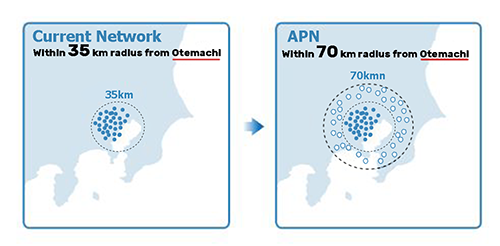By: Vito Mabrucco
Data-driven economies are racing toward a cliff. Investments in digital transformation continue to grow, yet up ahead are limits to transport capacity and computing power. These constraints
include the demise of Moore’s Law and data infrastructure that is hampered by bottlenecks, scaling issues, and high energy consumption.
Fortunately, many service providers and technology vendors are aware of this situation. A large number agree that one way to bridge the looming chasm is with photonics. This article reviews one
industry-driven approach and illustrates its capabilities through three reference models.
The dilemma is real. Over the past decade and more, enterprises around the world have invested hundreds of millions of dollars to digitally transform their operations and services. According to
an IDC report, annual global expenditures in this category will reach nearly $3.9 trillion in 2027. But will
the infrastructure be there to support this increased use of data?
Will the number of transistors in a silicon chip continue to double every two years, per Moore’s Law? What about issues of network delay inherent to the protocols (TCP/IP) that prevail across the
internet, or performance that cannot scale across diverse networks, or the unsustainable amounts of energy that data centers are expected to consume?
To answer the first question, transistors cannot get much smaller, meaning Moore’s Law will need to be amended or repealed. As for network protocols, there are alternatives (such as UDP) that can
be adapted for specific applications. A consensus is emerging, however, concerning one technology that can deliver exponential, across-the-board benefits commensurate with rising data-usage
demands, namely: photonics.
The timing is right. Consider the growing acceptance of silicon as a medium for light, an idea that was proposed more than thirty years ago. One near-term application for today’s booming silicon
photonics market is eliminating optical-to-electrical/electrical-to-optical (OE/EO) conversions in network equipment. The benefits? Reduced latency, expanded data center performance, and
increased energy efficiency.
 Figure 1: APN-Driven Data Center
Figure 1: APN-Driven Data CenterExpansionSource: NTT R&D Forum Keynote Speech, 2023, slide 43
Leaning on silicon photonics, along with advanced edge computing, wireless, cryptographic, and other technologies, an industry group led by NTT, Intel, and Sony emerged several years ago with a
roadmap for a new communications and computing platform. It is comprised primarily of an Open All Photonics Network (APN) and a related Data-Centric Infrastructure (DCI). Phase one (of four) has
now been completed, with an extremely low-latency service having gone live in March 2023.
Built on an open and disaggregated architecture and comprised of transceiver, gate, and interchange devices, Open APN has achieved data transfers of up to 1.2 Tbps and communication lags that are
one two hundredths of corresponding delays in conventional systems. Such a massive reduction in latency creates possibilities. It could enable the doubling of a data center network radius (See
Figure 1), eliminating the lag in remote e-sports, and providing new services, such as performances of a geographically distributed orchestra. Other examples include the area of manufacturing and
construction with the ability to do remote management of robotics, or in health care providing the true ability to do long-distance surgery. The industry group behind this approach, the
Innovative Optical and Wireless Network

Wanda Parisien is a computing expert who navigates the vast landscape of hardware and software. With a focus on computer technology, software development, and industry trends, Wanda delivers informative content, tutorials, and analyses to keep readers updated on the latest in the world of computing.


